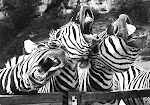_
Two winners out of five bets isn't cause for popping corks, but what would have happened if I had picked the favorites instead of the "dogs"?
My by-the-numbers picks lost me $300 but softened the blow somewhat by returning $265 in wins, leaving me $35 in the hole on the night.
Reversing the bets would have reeled in wins totaling $300, soured by two losing bets that cost me $305. Net loss, in spite of the fact that I had more right picks than wrong ones: $5.
NEW YORK ISLANDERS +140/Ottawa Senators -160
PITTSBURGH PENGUINS +125/Philadelphia Flyers -145
CHICAGO BLACKHAWKS +135/Detroit Red Wings -155
ATLANTA THRASHERS +140/St. Louis Blues -160
COLORADO AVALANCHE +115/Nashville Predators -135
This little exercise does not prove anything, but it serves to illustrate why I had powerful reservations when my friend "Peter Punter" first came to me with the idea that "cappers" held the key to making steady profits at sports betting.
Pete pointed to tipsters' win rates of 56% or better, and reasoned that a "game" with an overall positive expectation rather than the negative expectation that we are all used to when we risk money in a casino had to be the perfect platform for target betting.
Two months later, I am still not sure Pete's wrong.
But I don't think backing favorites, which tipsters tend to do to goose their win rate, is the way to go.
Favorites win more often, probably, but when they crap out, they cost a lot more money than underdogs do.
Worse, when they win, they pay less than even money, resulting in the numbers seen when final scores were in for my five NHL picks for Thursday, October 8.
From July 26 through October 4, Pete kept me posted on all his bets, giving me the opportunity to apply postmortem tests to see what coulda, woulda, shoulda happened if a variation of target betting had been applied to his picks from Day One.
The first problem was that from the far side of the world, Pete was stuck with having to make all his bets at once on any given day, with some of the events playing out simultaneously while he slept.
So it would not have been valid for me to take all the outcomes, and run them through a target betting model as if the bets were consecutive.
Almost from the start, I recommended that Pete split his wagers into multiple lines, perhaps limiting himself to five picks each day, and linking each first bet to the next day's first bet, each second bet to the next day's second bet, and so on.
Still and all, target betting's usually stellar performance would have to be hurt by the less than 1-to-1 return on the majority of the cappers' picks.
Pete chose to go a different route, betting as little as $20 when he did not have much confidence in a particular tipster, and more than $3,000 when he did, and using a cancellation system to set his wager values when he was not sure which way to go.
Today, I took all of Pete's sports betting data and separated most of the bets into four lines or series linking first, second, third and fourth bets each day.
Target betting did not cover itself with glory in this experiment, coming out of it after 158 bets with a final win of $800, or 1.75% of its overall action of $45,610.
That was disappointing, given that in spite of all the rude things I said about them in my e-mail exchanges with my friend Pete, the "cappers" managed to deliver an overall win rate for those 158 picks of 56.33%, providing a positive expectation of 6.33%.
Pete did not do so well. His actual result from 158 bets placed during a two-month trial run was a loss of $6,611 or -11.37% of total action of $58,168.
So at the end of the day, more right bets than wrong ones could not keep Pete out of trouble, precisely because of the higher cost of losses and lousy rate of return inherent in backing favorites.
Yes, favorites win more often. Usually.
But target betting depends on winning more when it wins than it loses when it loses to overcome the effect of negative expectation. And more wins than losses is not a whole lot of help when wins average $100 and losses cost $150 or more apiece.
I am posting all this in advance of running an identical four-bets-a-day test on outcomes in my baseball database, which has 737 games played from August 12 through October 4th.
To keep the process objective, I will dump all of the "dog picks" that I actually made while evaluating Pete's sports betting proposition, and will simply select the four underdogs offering the shortest odds above even money each day.
It should be interesting...
An important reminder: The only person likely to make money out of this blog is you, Dear Reader. There's nothing to buy, ever, and your soul is safe (from me, at least). Test my ideas and use them or don't. It's up to you.
_
Subscribe to:
Post Comments (Atom)


No comments:
Post a Comment